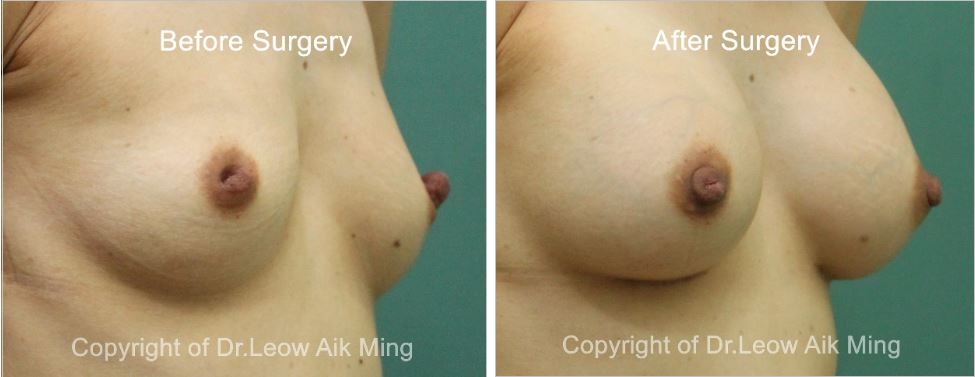An inverted nipple is a condition where the nipple instead of pointing outwards is retracted into the breast. It can be present since young (congenital), or it can be caused by breastfeeding, infections or as a sign of breast cancer. Both women and men can have inverted nipples.
There is three grading systems for inverted nipples:
Grade 1: The nipples occasionally become everted due to stimuli such as temperature or arousal and can be made to protrude and stay that way, by manipulating them with your fingers. Breastfeeding is usually possible in this case.
Grade 2: In this case, they can also be made to protrude but won’t stay evert without finger pressure. Here breastfeeding can be problematic at times.
Grade 3: The nipples are entirely retracted and cannot be pulled out physically. Milk ducts are often constricted, and breastfeeding is difficult, but not necessarily impossible. Women with grade-3 inverted nipples may also struggle with infections, rashes, or problems with nipple hygiene.
Inverted nipple surgery can help to restore the nipple to a beautiful and natural, projecting appearance.
Ideal candidates for inverted nipple correction surgery
- Patients who are concern with the appearance of their nipples
- Women with grade 2 or 3 nipples
- Healthy individuals who do not have medical conditions that can impair healing or increase the risk of surgery
- Individuals with a positive outlook and realistic expectations
- Non-smokers
Preoperative evaluation for inverted nipple correction surgery
Communication is vital to achieving the patient’s goals. During the initial consultation, patients will have the opportunity to discuss their goals and desired results with the plastic surgeon. The plastic surgeon will work closely with the patients to reach an agreement about the expectations from the surgical procedures involved and their long term benefits. Every patient is different. Therefore a specific treatment regimen is planned to suits an individual’s need. The preoperative evaluation for inverted nipple correction surgery includes:
- Discussion about patients’ expectations and desired outcome
- Medical conditions, drug allergies and previous medical or surgical treatment
- Use of current medications, vitamins, herbal supplements, alcohol, tobacco and drugs
- Discussion on anaesthesia and its risks
- Physical examination
- Nipple examination including detailed measurements of their size, shape, projection and skin quality
- Photography for preoperative and postoperative evaluation
Preparation for inverted nipple correction surgery
- Get laboratory testing or a medical evaluation
- Adjust medications if for specific medical conditions
- Stop smoking and alcohol well in advance before the scheduled date for surgery
- Avoid taking aspirin, anti-inflammatory drugs and herbal supplements before surgery
- Special instructions will be given on the day before and after surgery
The risks and safety information on inverted nipple correction surgery
It is crucial for patients to understand that every surgical procedure has its complications and downtime. However, if a patient is assessed correctly before the surgery and postoperative care is given adequately, these risks can be eliminated or reduced.
Some of the common risks of inverted nipple correction surgery:
- Infection
- Bleeding
- Poor wound healing
- Wound breakdown
- Skin discolouration
- Swelling due to a blood clot or fluid accumulation
- Unfavourable scarring (hypertrophy or keloidal scar)
- Temporary numbness or changes in the skin sensation around the nipple
- Potential partial or total loss of nipple
- Asymmetry
- Possibility of revision surgery
- Anaesthesia risks
Postoperative expectations
After the surgery, temporary dressings or bandages are applied to the incision sites. During the first 2-3 days, there may be discomfort, swelling and bruises around the nipple and areolar. Oral antibiotics and analgesics will be prescribed to reduce the risk of infection and postoperative pain respectively. Stitches will be removed on 7-10 days after the surgery. The symptoms of discomfort, swelling, and bruises around the nipple and areolar may disappear completely about 3-4 weeks after the surgery.it may take months or a year for the nipples to soften and feel more natural.
Case No 1:

Case No 2:

Postoperative care
- Regular application of antibiotic ointment and cleaning the operated areas for the first one week after the surgery
How much will an inverted nipple correction surgery cost?
Cost is always a consideration in elective surgery. The cost of inverted nipple correction surgery can vary widely.
The cost of inverted nipple correction surgery may include:
- Surgeon’s fee
- Hospital or surgical facility costs
- Anaesthesia fees
- Medical tests and x-rays
- Prescriptions for medication
Inverted nipple correction surgery is a cosmetic surgical procedure, and most of the health insurance does not cover cosmetic surgery or its complications.
